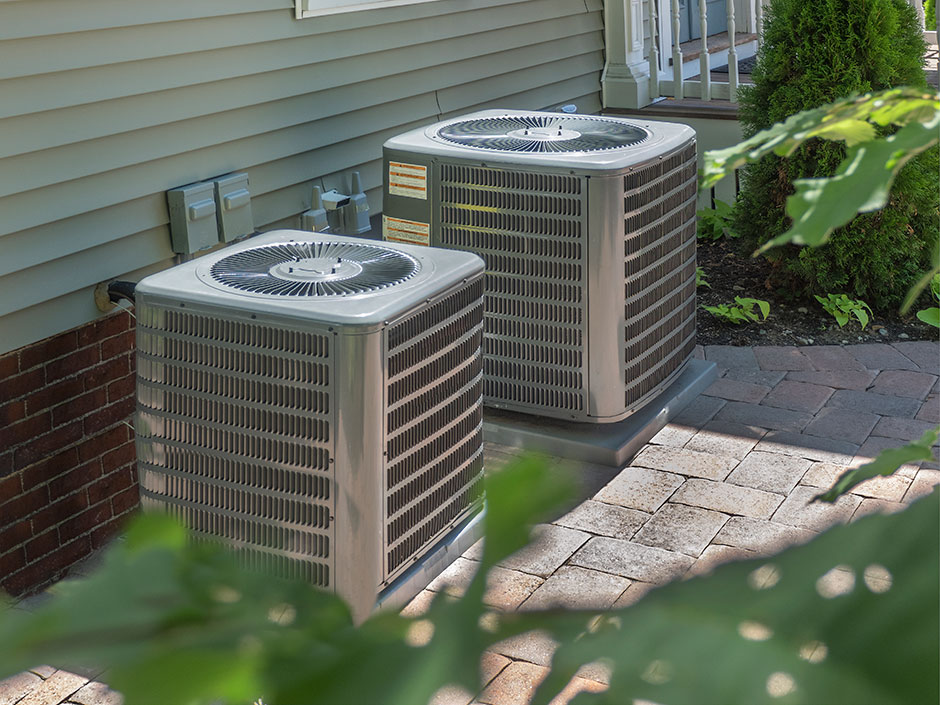What Does It Cost to Replace an Air Conditioner in Illinois?
Imagine a world in which we could purchase an air conditioner that would serve us for the rest of our adult lives. We’re not there yet and likely won’t be for a while, but advances in technology have improved how long some AC units can last.
Even with that progress, we should usually start thinking about replacing our air conditioner once it crosses 15 years. After that time, its age might begin to show through changing performance, rising energy bills or even unit failure. Whatever the case, when it’s time, we’ll want to know what it costs to replace an air conditioner here in Illinois.

Replacing an air conditioner will be a notable expense, so you’ll want to be well informed to ensure your next unit is the right one at the best possible price.
For today’s discussion, we’ll review the main things that determine your replacement cost.
Main Cost Factors
An air conditioner replacement’s primary expenses include the unit, the unit’s efficiency, the installation labor, and any additional components and services.
Air Conditioning Unit
When preparing to purchase a new unit, you’ll consider the right size according to the size of your home. An air conditioner for a 3,500sf home with three stories will require more hardware and parts than one for a 1,200sf ranch-style house.
Having the right size matters because if the unit is too small, it will work longer and harder and use more energy to cool your spaces. If the unit is too big, it will cost you needlessly more at the start and then draw extra energy to operate. An oversized air conditioner will cycle quickly as well, so it won’t properly adjust a room’s humidity.
The brand of air conditioner can also factor into the cost. An HVAC professional can let you know the price points for models by different manufacturers.
Efficiency
All cooling systems have a seasonal energy-efficiency rating, known as its SEER. This rating is based on an air conditioner’s total cooling output during a season divided by its total electric energy output.
In the past, an average system might have had a SEER of 8 or 9; a high-performing system had a rating of 12. Today, AC manufacturers are obligated to produce units with a minimum SEER of 13. Ultra-efficient air conditioners might have a rating as high as 27.
A higher rating with greater efficiency also translates into a higher price. The advantage of a more-expensive upper-SEER unit is often lower overall energy costs and cooling times. Whether this is useful typically depends on the length of the cooling season, which in Illinois might run from early June through mid-to-late September. Because of the intense but shorter season, many homeowners can be served by a unit with a SEER of 13 to 16.
Labor
Installing a new air conditioner requires proper training and equipment, as well as certification by the Environmental Protection Agency to handle refrigerant. For this reason, most people will have their unit installed by an HVAC professional.
Constituting about half of the replacement cost, the installation labor will involve the labor time (usually one full business day), the unit’s location and the level of installation difficulty.
Additional Components and Services
A new air conditioner might also need new components such as an indoor coil unit, a blower fan or extra ductwork, each of which will influence the cost.
You might further choose to include the most current system capabilities. For example, today’s technology lets you set temperatures for different rooms or areas of your house. Including this will cost more than if you have a system that cools your spaces evenly.
Systems that self-diagnose, provide notifications or have fan-speed settings for greater climate control likewise can raise the expense. Though requiring more initial investment, upgraded features can reward you in convenience, flexibility and energy savings.
Typical Cost
Now that we’ve reviewed the main factors, let’s consider what you might expect to pay to replace an air conditioner in Illinois.
Without knowing additional components and services you would want or need, we’ll base the expense on the installation of a new air conditioner for a 2,000sf home in Oswego, Naperville, Yorkville, Aurora or Plainfield. The unit will be a reputable brand with a 13 SEER and installation in one business day.
Cost: $4,000–$5,000
Here for Answers and Service
We enjoy serving our customers here in the area, and we welcome any other questions you might have about what it costs to replace an air conditioner in Illinois. Simply call (630) 585-6444 to speak with a Beery Heating and Cooling professional.
Our dedicated service area also includes communities such as Batavia, Plano, Lombard, Bolingbrook and Montgomery.
